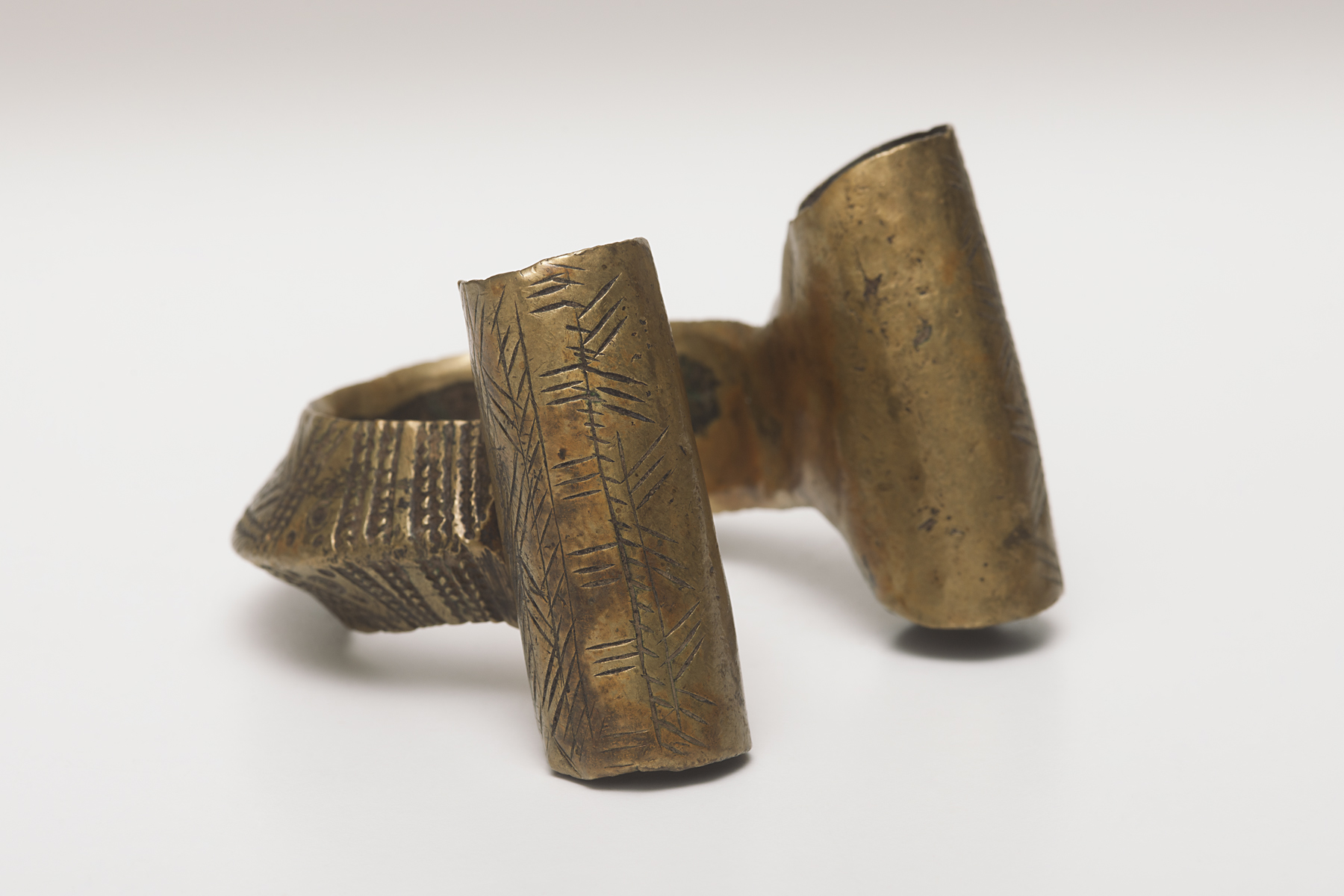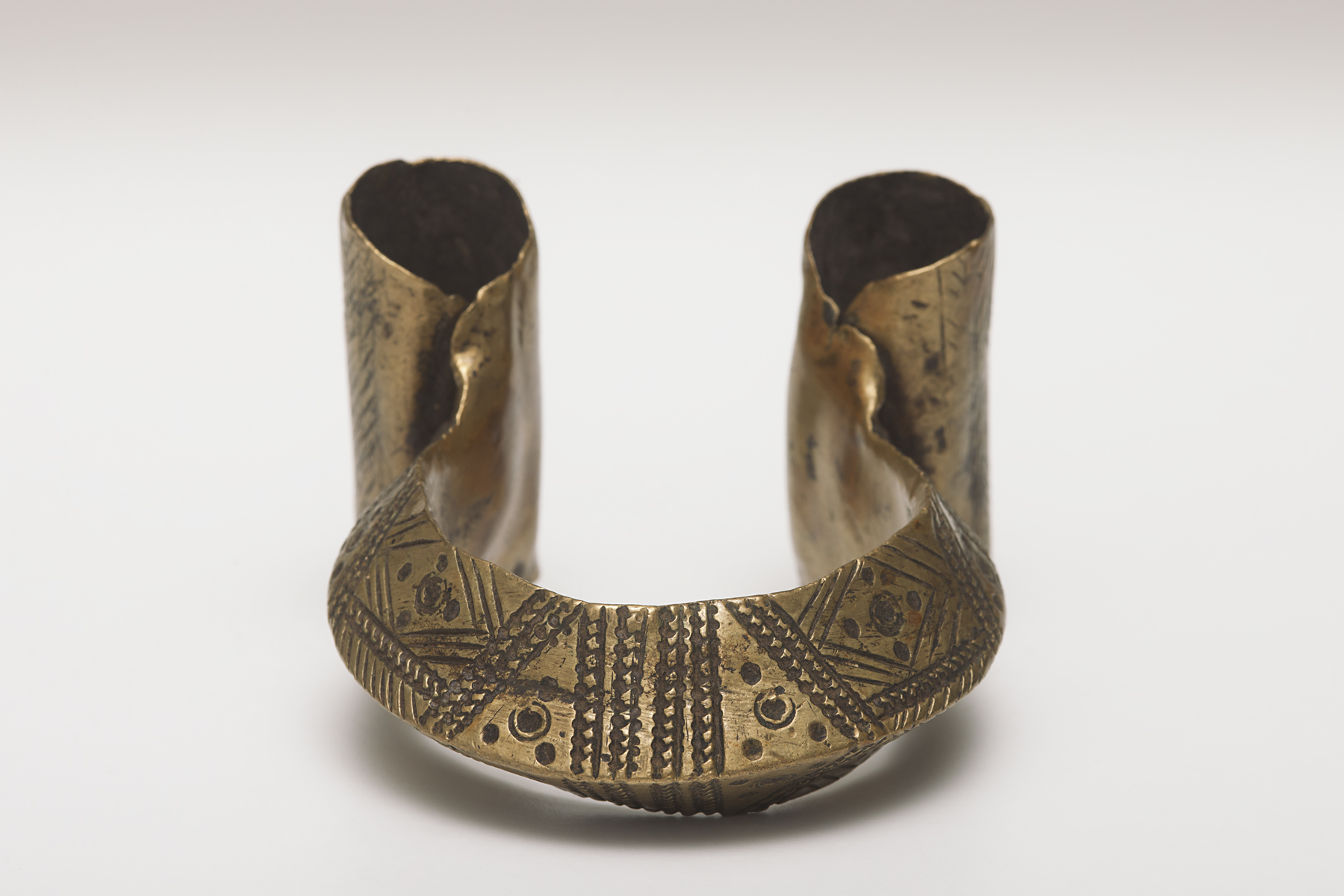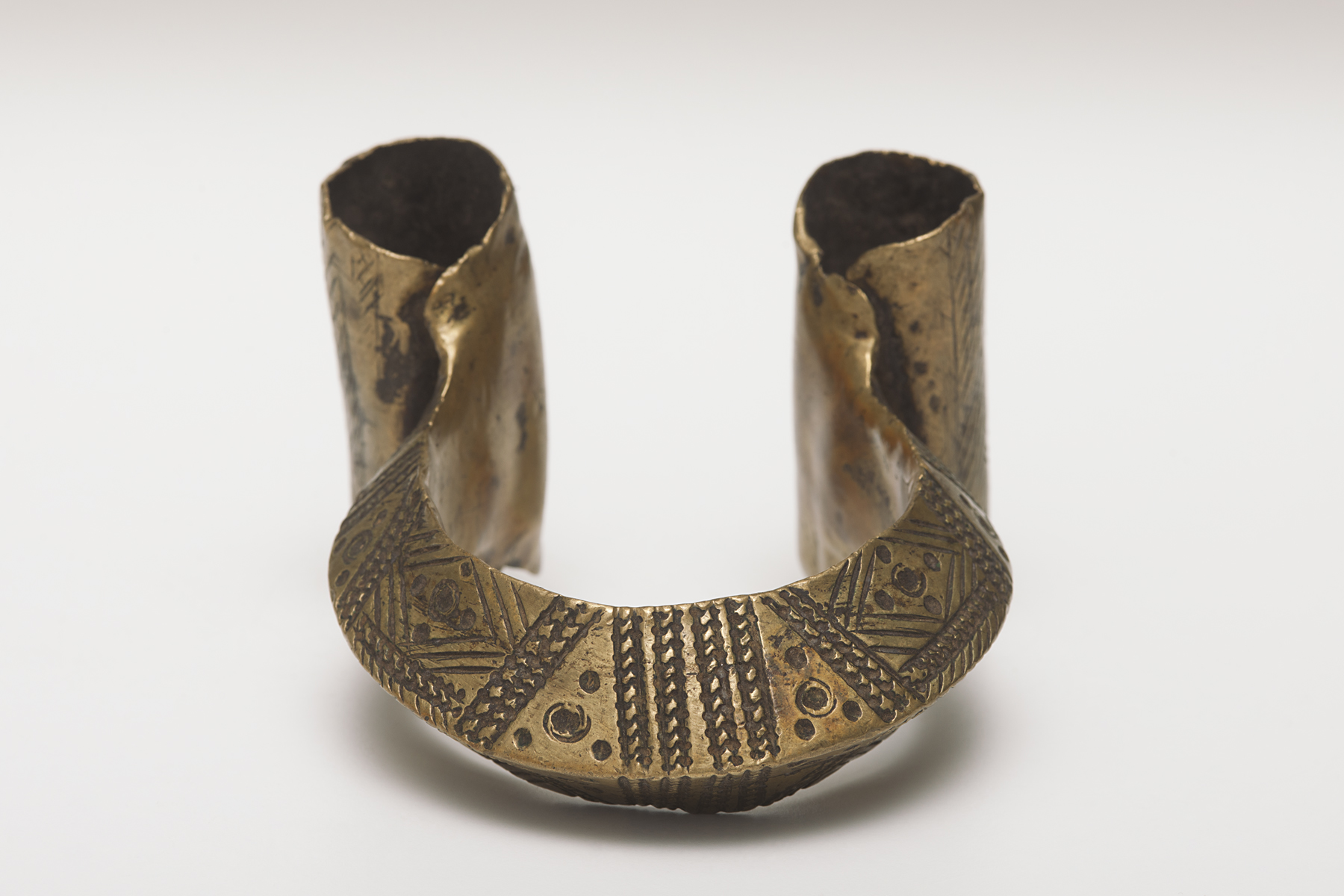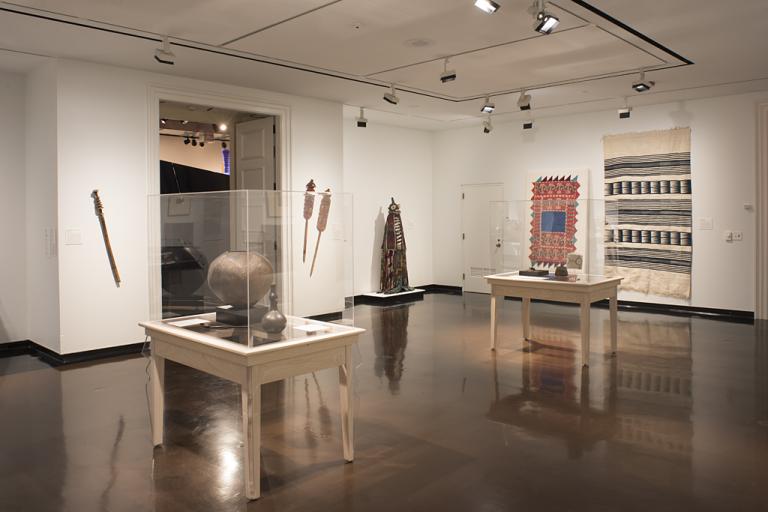Race, Gender, and the "Decorative" in 20th-Century African Art: Reimagining Boundaries
This anklet is from the Danakil Desert in Ethiopia. Made from brass by a male metalsmith, it has a convex shape that curls into cylinders on each end of the cuff. In order to produce its shape, the artist softened the brass by heating it until it glowed red and then formed the shape by hitting it with a hammer anywhere there was a curve. To make the inside of the anklet, the artist soldered an additional piece of brass. The patterned linework and circles on the outer edges of the piece were created using a blunt edge and hammer. While made by a man, the anklet would have been worn by an Ethiopian woman, likely for weddings and other ceremonial occasions.
Historically, Ethiopia has been populated by pastoralist communities such as the Amhara, Tigray, and Afar. While they relied primarily on their own livestock to survive, they also engaged in trade with other cultural groups. Arts of the body, such as jewelry, are the primary forms of aesthetic expression among pastoralist societies and were also highly portable trade goods, leading to cross-cultural borrowings of technique and styles in the production of jewelry. In addition to the Spencer’s collection of brass jewelry attributed to the Amhara and Tigray, the Musée de Quai Branly in Paris has similar examples in its collection made by the Afar of northeastern Ethiopia.
Written by Molly Johnson.
Arts worn on the body signify identity, social status, and personal taste. They also reflect women’s creative contributions to commercial networks and markets. Here too, an artist’s gender governs their choice of medium for making jewelry and other personal objects. Often, female artists work with beads, shown in the Maasai and Ndebele women’s beadwork here. In contrast, male artists work with metal, represented in metal jewelry from Ethiopia and southern Africa. Although lingering colonial perceptions fostered a simple and binary view of some African jewelry as inauthentic “craft,” artists created personal adornment for many reasons. Through artistic production, these artists rejected societal marginalization, expressed cultural values, and experimented with trade beads and other valuable materials. The geometric designs in this Ndebele beaded panel reflect murals that women painted on the outside of homes to resist apartheid policies. These policies forced the removal of Zulu families to “tribal homelands” in rural areas in order to strip black South Africans of their citizenship and render them invisible. Under these oppressive conditions, women artists asserted their creativity, identity, and resistance through murals and beadwork.
Tap on the related icon above to see similar pieces in the Spencer Museum of Art’s collection.
Tap on the web icon above to see similar pieces in the the Musée du Quai Branly in France.





